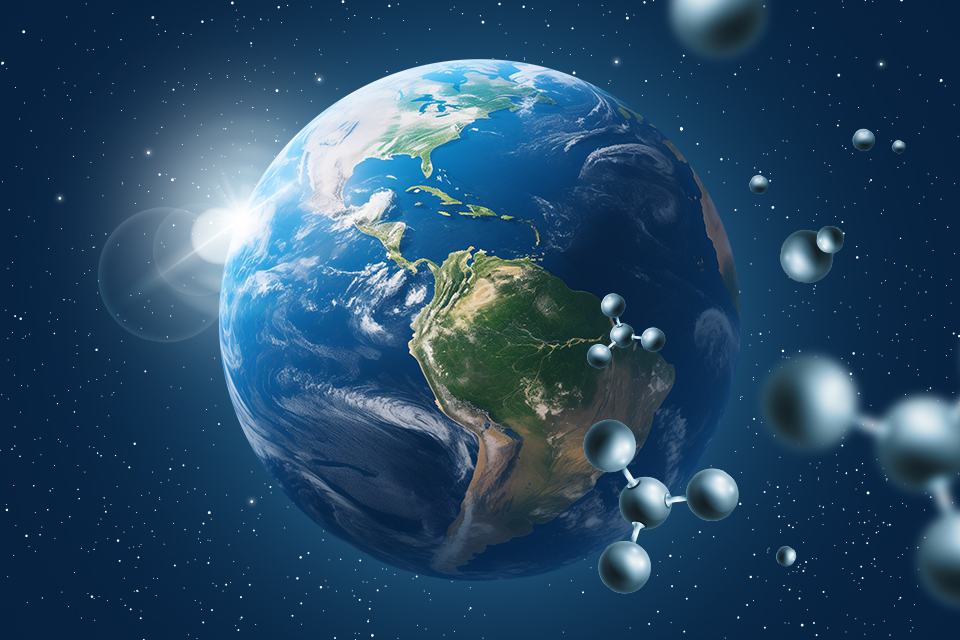Panspermia is one of the most popular hypotheses of the origin of life on Earth in modern media and near-scientific circles. In the most common presentation, it claims that life did not originate on our planet, but was brought from outer space. But the question of how scientific it is should be dealt with separately.

1. Where did the panspermia hypothesis come from?
The word “panspermia” in Greek means “all seed”. It was invented in Ancient Hellas, but scientists actively began to use it in the second half of the XIX — early XX century. The reason for this was the development of evolutionary theory and paleontology. Science could trace the development of the biological world for hundreds of millions of years, but there was no answer to the question of where the first single-celled organism came from, from which it all began.
At the same time, scientists, including Swedish chemist and one of the first Nobel laureates Svante Arrhenius, drew attention to the exceptional stability of many single-celled organisms. They suggested calling the word “panspermia” a hypothetical process of transferring living organisms to new worlds that were somehow thrown into space from their own planet, but did not die.
The panspermia hypothesis has never been considered mainstream by biologists due to lack of evidence, but it explained well where life came from on Earth, so it became widely known.
2. What is abiogenesis?
Abiogenesis is a theory explaining how life could have arisen on our planet “on its own.” According to it, a living cell is not the smallest “block of life”, and biological evolution was preceded by a long chemical one. During it, more and more complex organic molecules were formed, which gradually acquired the properties of living organisms.
By itself, the theory of abiogenesis does not deny panspermia. However, it can explain the origin of life on our planet without involving space travel. Therefore, if convincing arguments for its truthfulness appear, panspermia will not be very necessary.
At the same time, it is worth noting that the theory of abiogenesis is currently significantly incomplete. Scientists have recreated the vast majority of the processes that have made it possible to go from simple compounds such as methane and ammonia to a living cell, but some of its individual “steps” are still being investigated.
3. Does panspermia deny evolution?
The authors of the panspermia hypothesis created it at a time when almost no one knew anything about how the smallest elements of “living matter” were arranged, or about what conditions existed outside the Solar System. Therefore, it was presented quite generally and in popular interpretations often acquires signs of pseudoscience.
Many believe that the panspermia hypothesis denies abiogenesis. Although, it just gives us the opportunity to do without it. Some go further and say that the possibility of life from outer space negates biological evolution. This is due to a misunderstanding that in this hypothesis we are talking about some primary very primitive organisms, and not about birds, dogs and people who were brought from another planet. At the same time, not a single fact that can be unambiguously interpreted as at least a virus hitting the Earth from space has yet been found. All living things on our planet have a pedigree that can be traced back to the past.
4. What is life?
The current debate around the panspermia hypothesis rests on the definition of what life is. In general, it is described as a system that interacts with the “inanimate” world in a limited way (practically not evolving), consisting of individual particles, each of which can reproduce itself, albeit with some deviations. These deviations are influenced by selection by the external environment, as a result of which evolution becomes possible.
But the fact is that not only single- and multicellular organisms correspond to these parameters. Some ribonucleic acids behave the same way under certain conditions, although they are essentially simple molecules. And polyaromatic hydrocarbons are also capable of something similar. So, where exactly the boundary between the living and the inanimate lies, no one can say for sure yet.
5. Is it possible to combine abiogenesis and panspermia?
The situation with panspermia is further confused by spectroscopic studies of various corners of our Galaxy. They show that it does not just contain organic substances — in fact, there are many of them and they are quite complex. Even amino acids and polycyclic hydrocarbons have been found in some places. Many facts indicate that at least some organic matter synthesis reactions can occur directly in space.
And this means that some “blocks of life” can actually form, for example, in protoplanetary disks, and then fall out onto planets. It is still unknown how far these reactions can go. But it is obvious that now we need to talk not about the opposition of panspermia and abiogenesis, but about their synthesis.
Follow us on Twitter to get the most interesting space news in time
https://twitter.com/ust_magazi


